10 ancient ruins to see in Pompeii
In an earlier post, we wrote about whether Pompeii is worth visiting from Naples. We shared that a trip is highly encouraged given Pompeii’s historical and archaeological significance. What’s interesting is that the entire archaeological area has mostly been restored. You will feel as if you’re walking through an ancient civilization given the scale. The ruins of Pompeii spans 66 hectares, so do set aside at least half a day to explore the site. Here are 10 ancient ruins to see in Pompeii.
10 ancient ruins to see in Pompeii
1. Casa del Menandro (The house of Menander)
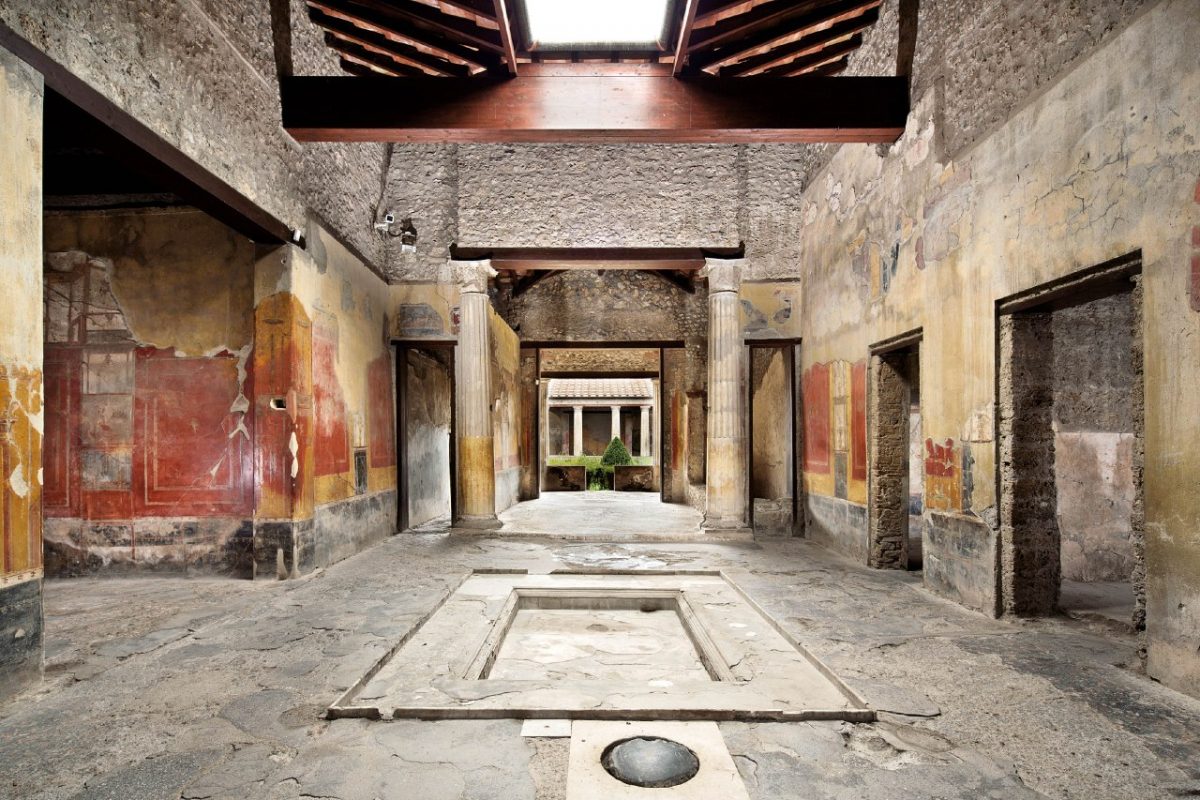
According to Wikipedia, Casa del Menandro is considered to be the wealthiest property in ancient Pompeii, covering an area of 1,800 sqm. The property was found to be intricately decorated with art pieces and had a unique architectural design. Therefore, archaeologists assumed that the owner could be an aristocrat or politician, with an avid interest in art and design. The owner’s identity has also been a source of debate, as many Romans had invested in holiday homes in Pompeii due to the warm Mediterranean weather. Till today, it has not been established if the owner of the villa was a local Pompeiian or a foreigner.
2. Temple of Apollo
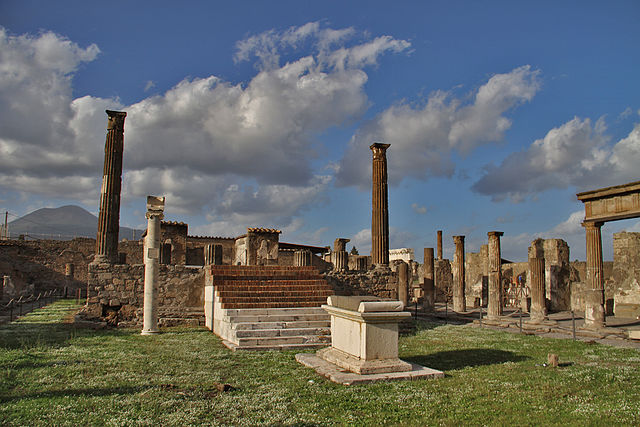
According to Wikipedia, the Temple of Apollo was built in Pompeii in 120 BC. It was the town’s most important religious building, based on the religious following of Apollo which had origins in Greece.
How did Deadalus find his way to the Temple of Apollo in Pompeii?
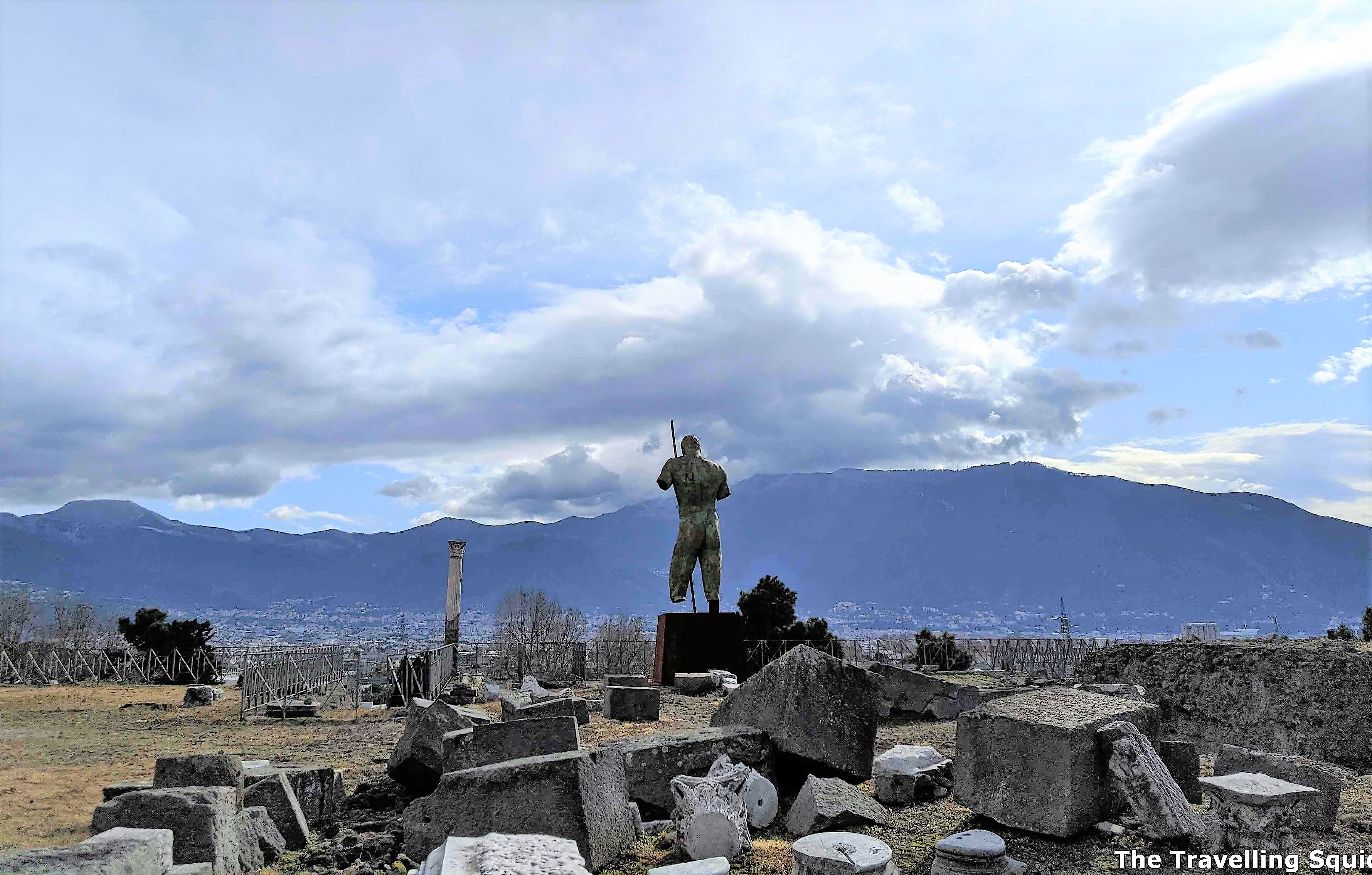
In 2017, there was an exhibition by Polish artist Igor Mitoraj held at Pompeii, featuring several mythological sculptures. At the Temple of Apollo, the sculpture of Deadalus was featured, which later became a permanent fixture after being gifted to Pompeii by the Mitoraj Foundation. According to Pompeii Superintendent Massimo Osanna, the permanent feature of the sculpture Deadalus was in line with the site’s philosophy to maintain Pompeii’s image as a contemporary location.
4. Forum at Pompeii
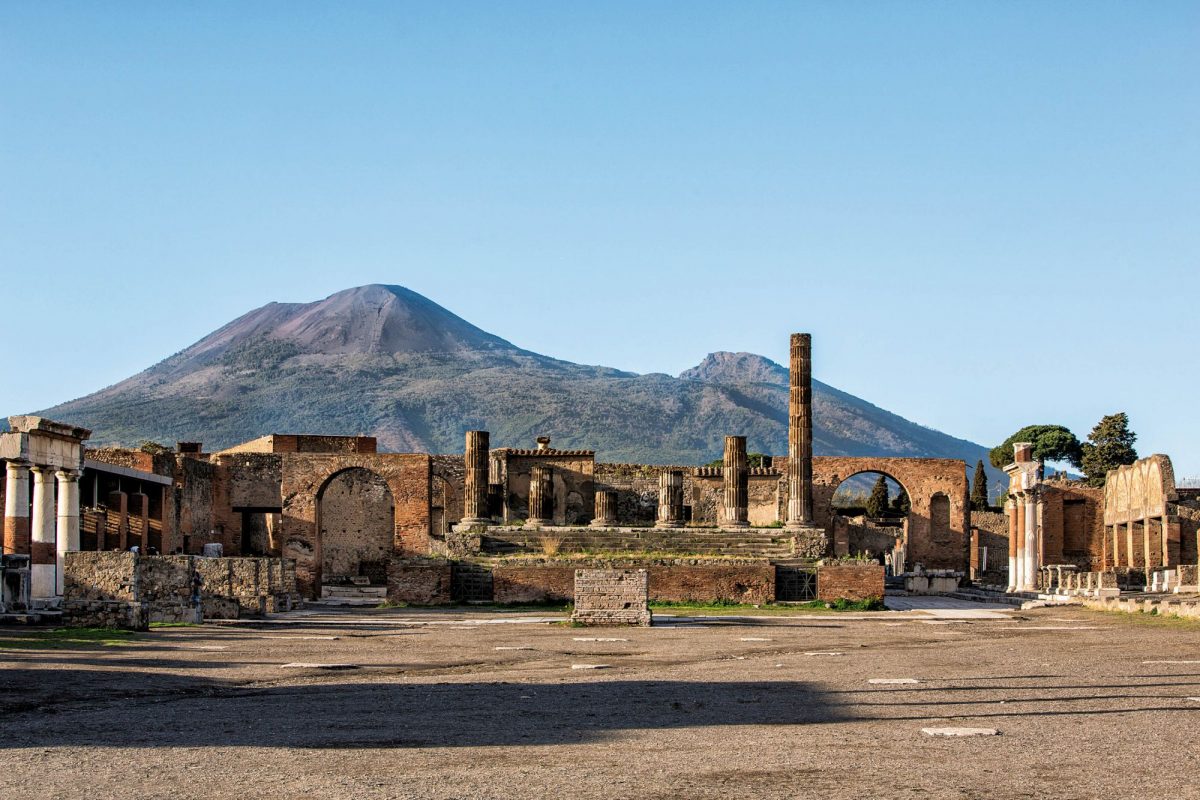
(Photo credit: http://pompeiisites.org/)
According to the Pompeii official site, the Civil Forum is the focal point of the city, where the market, shops places of worship, justice and administrative buildings are located. From the picture above, looks like a simple open area shaped in a square. The Forum was modified in the 3rd and 2nd century BC to align with the axis of the square. The façade of the Temple of Jupiter is aligned with that of Mount Vesuvius.
5. House of Vettii
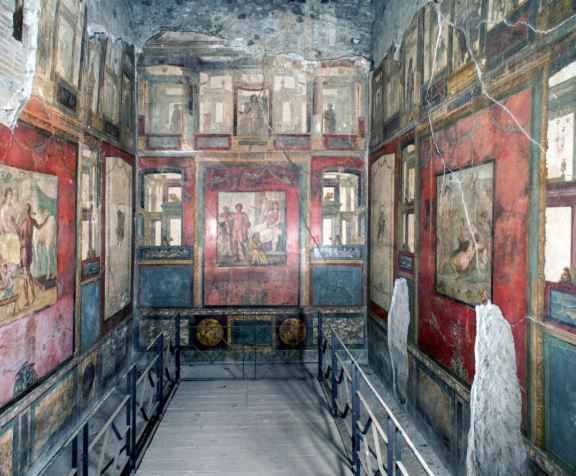
(Photo credit: http://pompeiisites.org/)
According to the Pompeii official site, the house is considered to be one of the richest and most famous in Pompeii. It is said to be under the protection of Priapus, the god of prosperity, symbolising the economic prosperity of the owners, the brothers Aulus Vettius Restitutus and Aulus Vettius Conviva liberti, who were freed slaves and became rich through trade. The appearance of the house was later changed to make way for a large garden with statues and jets of water.
6. Forum Baths
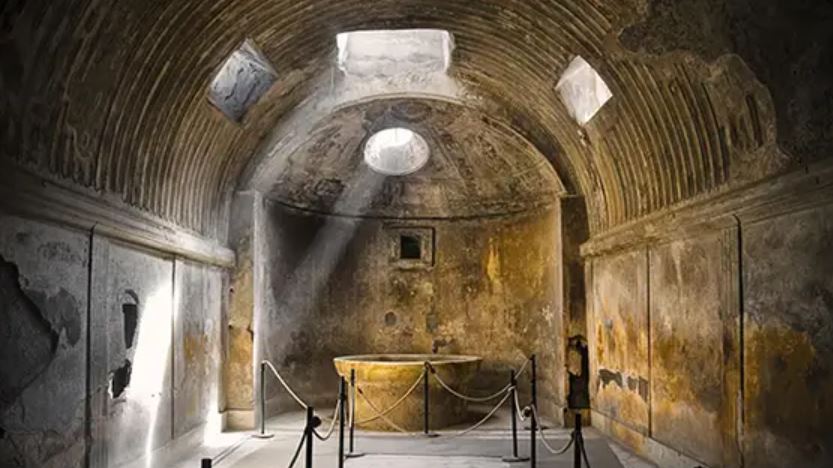
Located behind the Temple of Jupiter, the Forum Baths were founded by a colony of veterans. Women’s and men’s quarters had separate entrances. The men’s section had an apodyterium (dressing room), used also as a tepidarium (for medium temperature baths), frigidarium (for cold baths) and calidarium (for hot baths). Significant effort was put to decorating the rooms. There was also an area for storing clothes and a bronze heater for heating.
7. Theaters
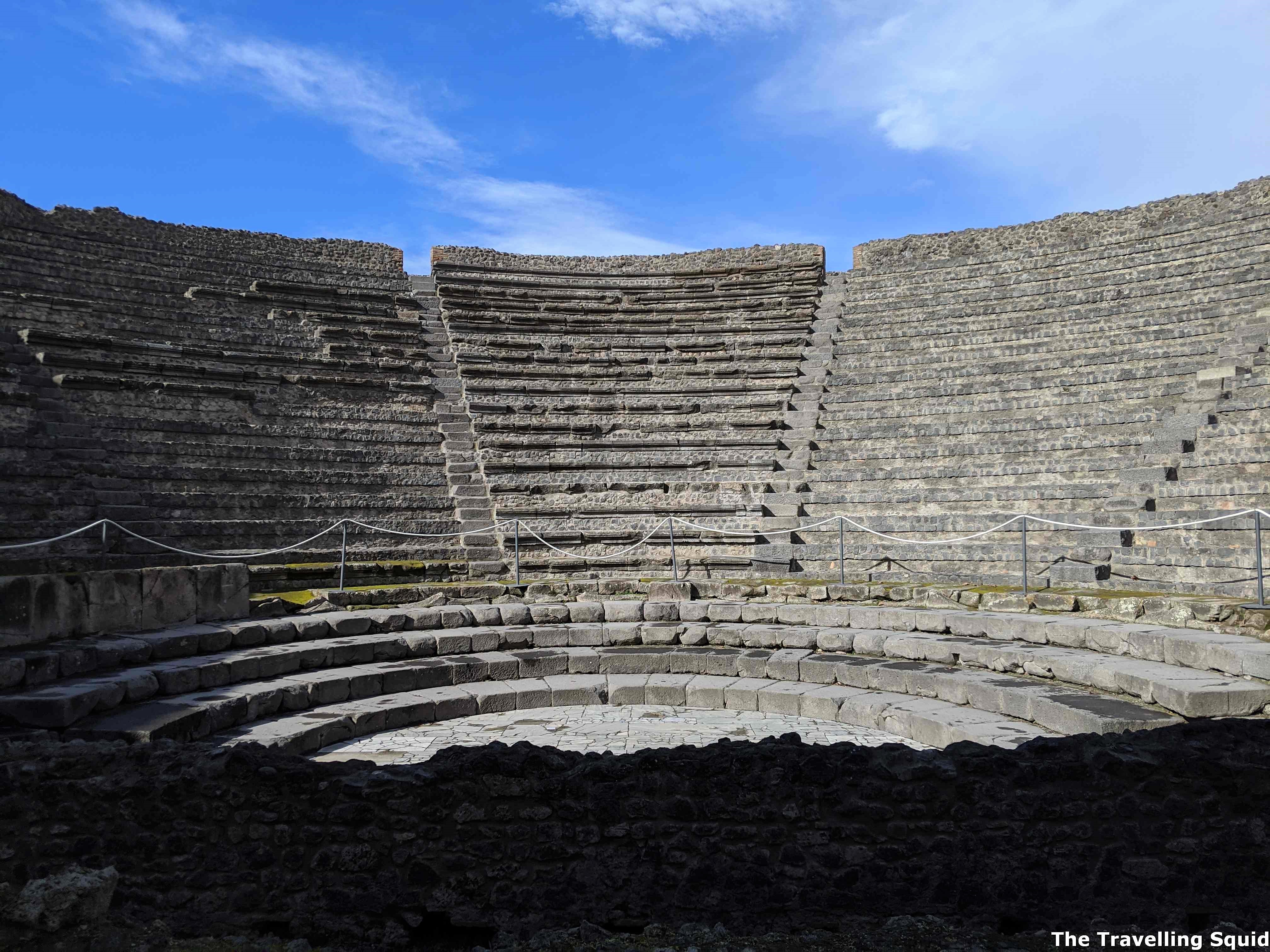
There are two types of theaters located in Pompeii – Odeon, the small theater, and the larger Grand Theatre. The Odeon was probably used for the most popular theatrical genre at that time – miming, as well as musicals and concerts. The structure was also covered by a roof to improve acoustics. According to Pompeii’s official site, the plaster of the external masonry retains the graffiti left by spectators of the shows. Some of this graffiti were traced to regions far away from Pompeii.
The Grand Theater was built by leveraging the slope of a hill for the construction of the auditorium. The staircase was separated into three areas with corridors, which were in turn divided into five sectors, to be accessed by a passage with a barrel vault. Velarium was a type of awning used as a cover during warmer days. Comedies and tragedies of Greek-Roman tradition were performed at the Grand Theater. Interestingly, the Grand Theatre was the first large public building completely freed from the deposits of the eruption.
8. House of Faun
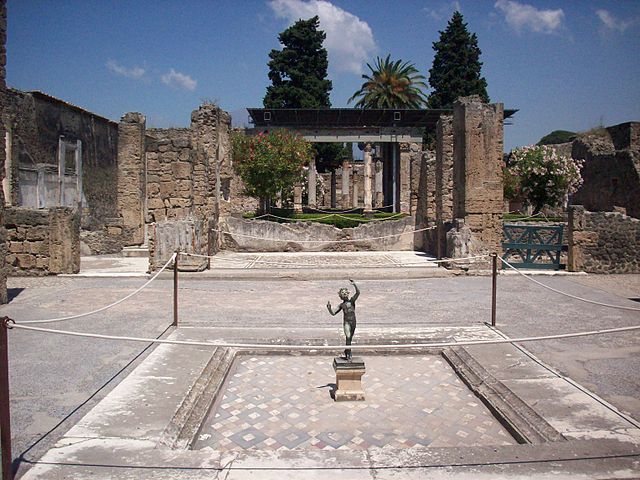
(Photo credit: By Porsche997SBS – Own work, CC BY-SA 3.0)
The House of Faun is one of the largest and most impressive private residences in Pompeii and houses many famous pieces of art. The site got its name from a bronze statue of a dancing faun (a mythical half-human, half-goat creature) located in its premises. According to Wikipedia, it is considered to be one of the most luxurious aristocratic houses in Rome, and reflects the period better than most archaeological evidence found in Rome. The building suffered damage from an earthquake in AD62 but was repaired and used till the eruption in AD79.
9. Vineyards
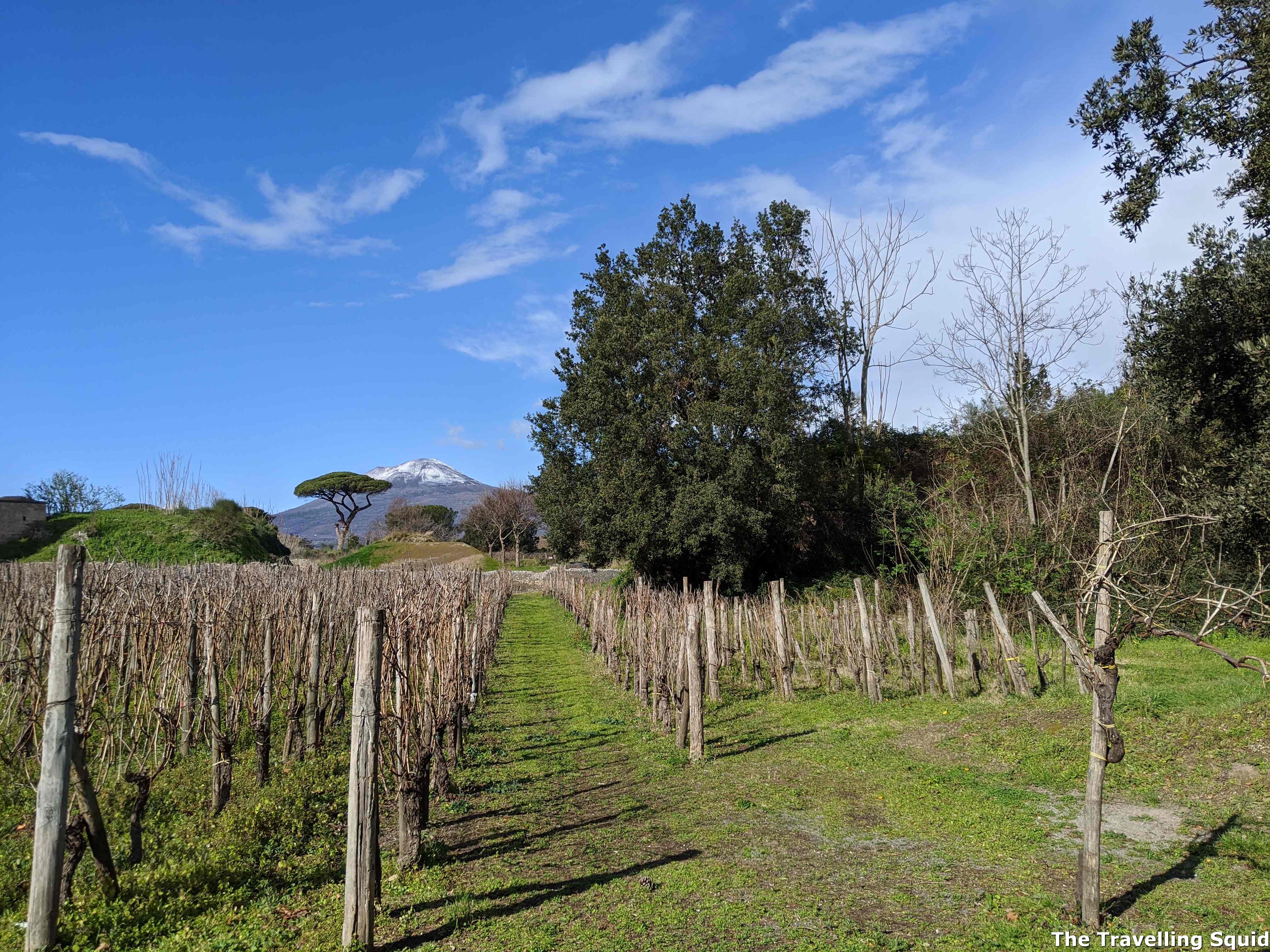
To be honest, the archaeological aspects of Pompeii can get a little overwhelming after some time. It was extremely refreshing to see a vineyard at the far end of Pompeii overlooking Mount Vesuvius. It was drizzling earlier on and the sun had just come out when we arrived at vineyard. Unfortunately, to enter the vineyard, you will have to make an appointment.
As with most sites in Pompeii, the vineyard has historical roots. Through archaeological investigations and botanical studies, vine roots were detected and so was the support for the vines. This proved that a wine culture existed in Pompeii during its rise.
Today, the vineyard is operated by Mastroberardino, an established Italian winery. The project, Villa dei Misteri, was started in 1996, when the company was approved by the Archaeological Superintendence of Pompeii to restore Pompeii’s viticulture. The wine, Mastroberardino – Pompeiano Villa Dei Misteri Rosso is rated 4.2 out of 5 on Vivino, which is an impressive rating especially for a wine grown in volcanic soil. Made with 90% Piedirosso and 10% Sciascinoso, this wine also fetches a hefty price of over USD200 for the 2008 vintage.
10. Amphitheatre
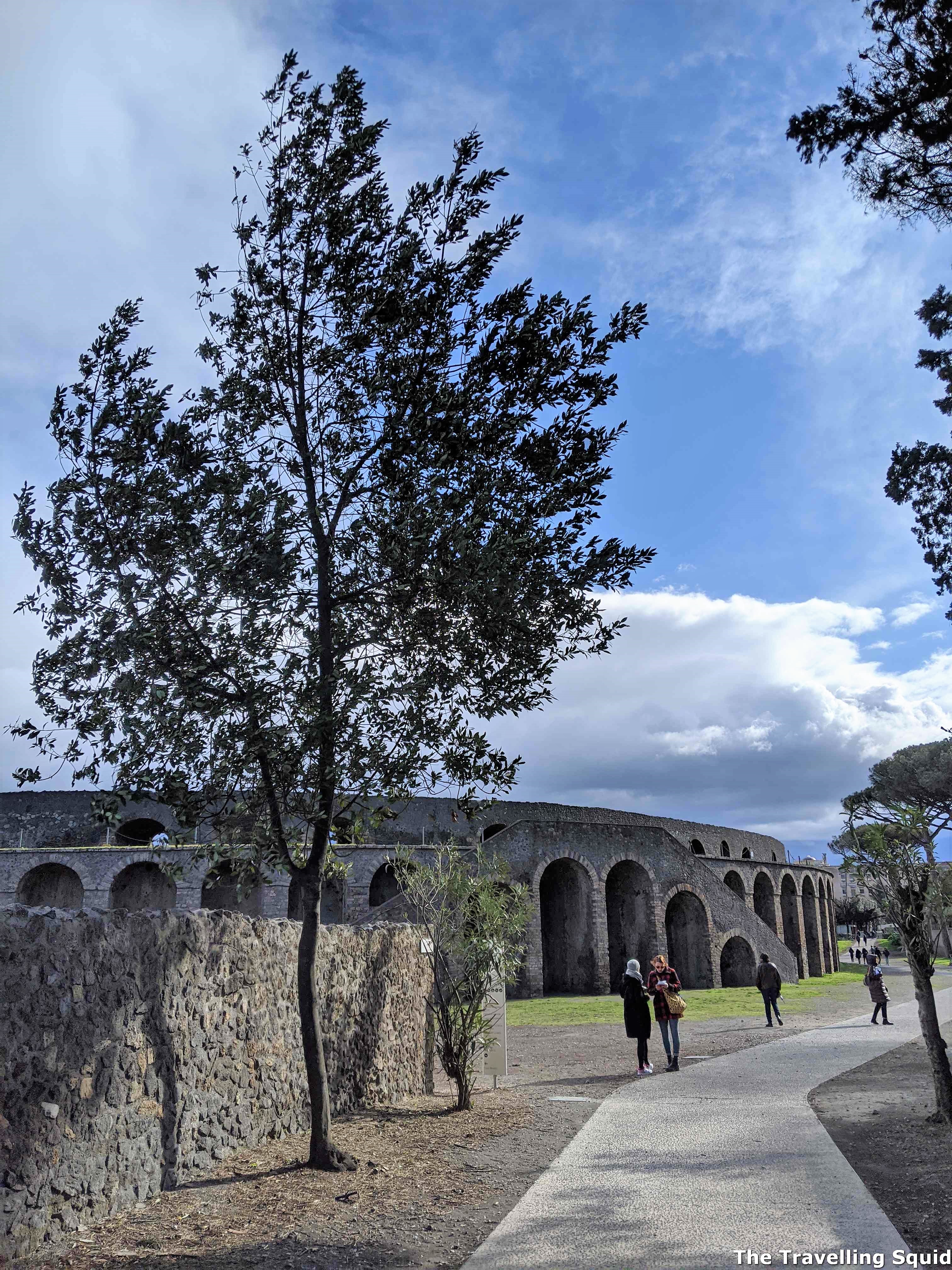
The Amphitheatre in Pompeii is significant because it is is the oldest surviving Roman amphitheatre which is built of stone. The Colosseum in Rome postdates the one in Pompeii. In recent years, apart from being an object of archaeological study, the amphitheatre has been used for concerts and other public events. While Pompeii’s Amphitheatre is smaller in scale, I found it to be grand and cosy at the same time. It is no wonder why artistes would choose to hold concerts there.
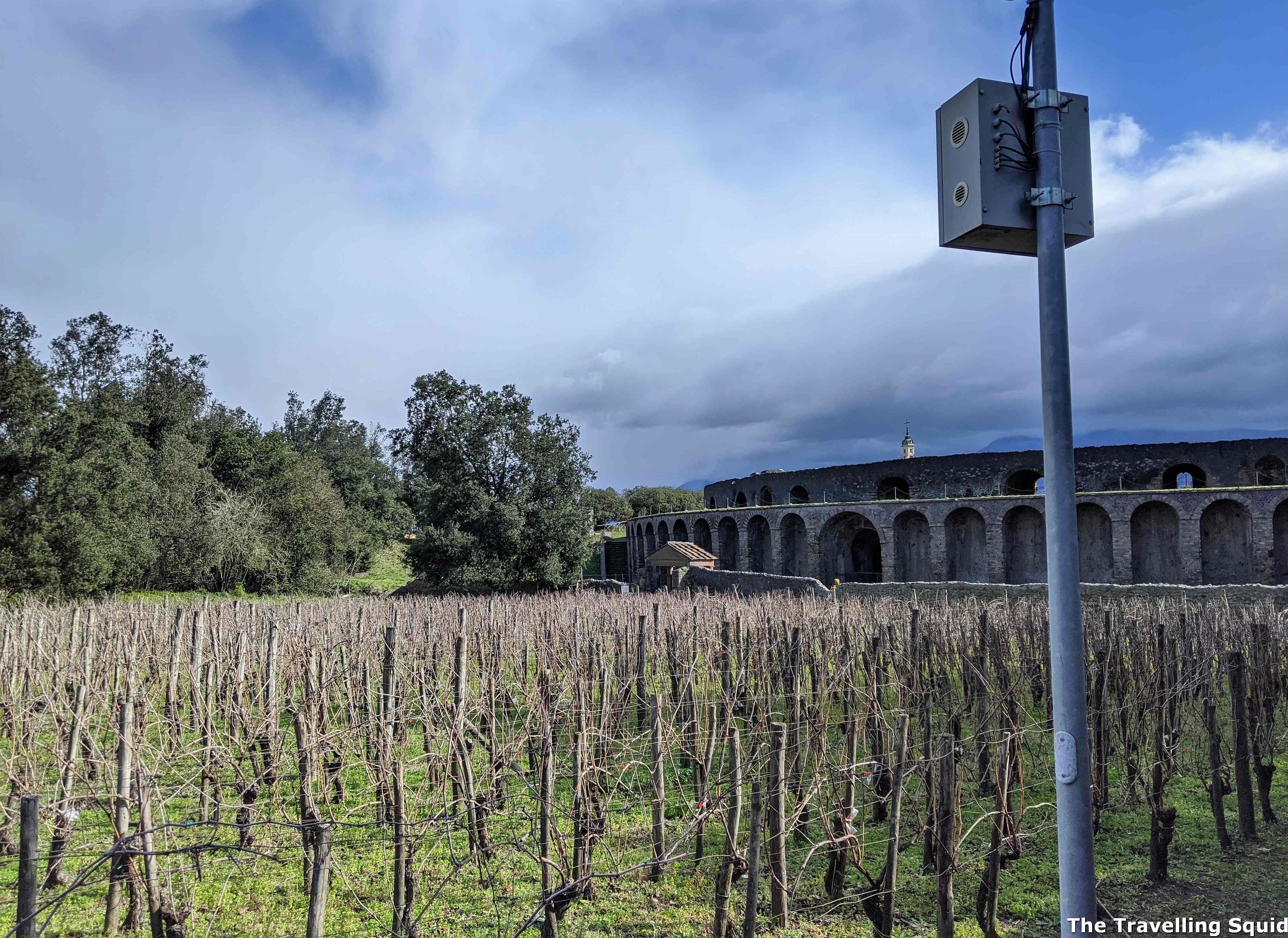
The Travelling Squid’s Take
Pompeii is an interesting attraction – I strongly recommend that you spend at least half a day there. To me, the best site in Pompeii is the vineyard, as making wine in volcanic soil is challenging. In additional, I am also intrigued to taste the wine of this significant location. Hope you found this list of 10 ancient ruins to see in Pompeii useful – do drop a comment if you have other recommendations.

Leave a Reply